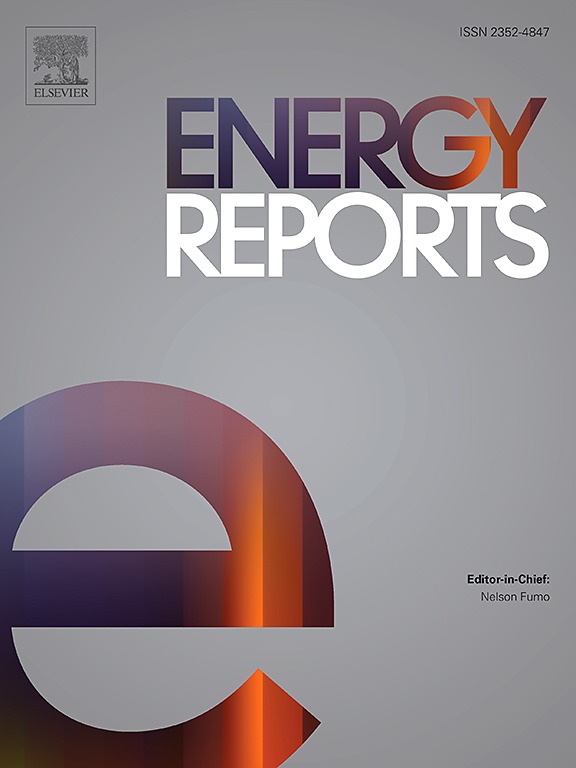Colombian agroindustrial crop residues: Thermochemical characterization and evaluation of their energy potential
IF 4.7
3区 工程技术
Q2 ENERGY & FUELS
引用次数: 0
Abstract
Agricultural waste has been identified as a possible reservoir for generating valuable products and energy sources. However, its diverse and non-standard composition poses challenges to maximizing its potential in product generation. This study aims to characterize Colombian agroindustrial crop residues, such as cocoa pod husk (CPH), cocoa bean shell (CBS), sugar cane bagasse (SCB), and plantain leaves (PL), as sustainable and reliable sources and feedstocks for conversion processes, given their high production in the country. Proximate, ultimate, and biochemical compositions, energy content, and thermogravimetric analysis were performed on the biomass samples. The results showed that thermochemical processes can be applied to dried CPH, however, its high moisture content upon harvesting makes it more suitable for biochemical treatment despite its high lignin content. CBS naturally attains brittleness and dryness, making it a good candidate for use in densification processes, e.g., pellets. However, CBS's elevated nitrogen content suggests its use in co-combustion. The characteristics of SCB make it ideal for cellulosic ethanol generation, considering SCB's high availability in the country and the successful implementation of ethanol technology in the region. Upon harvest, PL has high moisture and inorganic content. Through hydrothermal treatment, PL can be converted into hydrochar with increased hydrophobicity and reduced inorganic content. This research promotes the advancement of environmentally sustainable bioenergy solutions in Colombia. By utilizing these abundant agricultural residues, Colombia stands to realize the potential for a sustainable, carbon-neutral energy source, while improving waste management practices, and fostering economic growth within the agricultural sector.
哥伦比亚农用工业作物残留物:热化学表征及其能量潜力的评价
农业废弃物已被确定为产生有价值产品和能源的可能储存库。然而,其多样化和非标准的组成构成了最大限度地发挥其在产品生产潜力的挑战。本研究旨在描述哥伦比亚农业工业作物残留物的特征,如可可豆荚壳(CPH)、可可豆壳(CBS)、甘蔗甘蔗渣(SCB)和车前草叶(PL),鉴于它们在该国的高产量,它们是可持续和可靠的转化过程来源和原料。对生物质样品进行了近似、终极和生化成分、能量含量和热重分析。结果表明,热化学处理可用于干燥的CPH,但其收获时的高含水量使其更适合生化处理,尽管其木质素含量高。CBS自然地获得脆性和干燥性,使其成为致密化过程中使用的良好候选者,例如,颗粒。然而,CBS的高氮含量表明其用于共燃。考虑到SCB在该国的高可用性以及乙醇技术在该地区的成功实施,SCB的特性使其成为纤维素乙醇生产的理想选择。收获后,PL具有高水分和无机含量。通过水热处理,PL可以转化为烃类,增加了疏水性,降低了无机含量。这项研究促进了哥伦比亚环境可持续生物能源解决方案的发展。通过利用这些丰富的农业残留物,哥伦比亚有望实现可持续、碳中和能源的潜力,同时改善废物管理做法,促进农业部门的经济增长。
本文章由计算机程序翻译,如有差异,请以英文原文为准。
求助全文
约1分钟内获得全文
求助全文
来源期刊

Energy Reports
Energy-General Energy
CiteScore
8.20
自引率
13.50%
发文量
2608
审稿时长
38 days
期刊介绍:
Energy Reports is a new online multidisciplinary open access journal which focuses on publishing new research in the area of Energy with a rapid review and publication time. Energy Reports will be open to direct submissions and also to submissions from other Elsevier Energy journals, whose Editors have determined that Energy Reports would be a better fit.
 求助内容:
求助内容: 应助结果提醒方式:
应助结果提醒方式:


